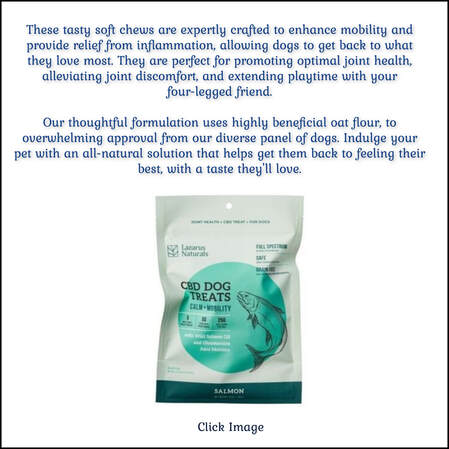|
By Rick Swartzburg, D.C.
Introduction Glucosamine and MSM (Methyl Sulfonyl Methane) are perhaps the most widely used natural supplements for those seeking alternative solutions for pain relief, inflammation and tissue repair. This large scale interest was prompted from some early positive studies on these nutrients and has blossomed into a full spectrum of current and future planned scientific studies which preliminarily continue to validate supplemental use of these naturally occurring compounds for a variety of disorders. Both of these supplements have been studied since the early 1980s, but with an increasing interest in alternative remedies that can perhaps offer a natural solution to a medical problem, the medical and scientific community has taken a much more active approach in researching these topics. |
Glucosamine
|
Glucosamine, the precursor in the formation of Chondroitin, has been found to stimulate cartilage cells to synthesize glycosaminoglycans and proteoglycansore(1). This essentially means that Glucosamine has the potential to rebuild the cartilage lost in a joint due to injury or osteoarthritis, also known as degenerative joint disease. A very recent study, study discloses a possible new mechanism of action for Gluscosamine Sulphate that seems to be in keeping with a potential protective effect that it has on the stimulation of cartilage formuation(2). With more than 30 million Americans suffering from this type of arthritis, it is no wonder that the American College of Rheumatology took a closer look at this supplement. In a 1999 press release they proclaimed that Glucosamine reduces the signs and symptoms of osteoarthritis of the knee. Lead investigator Jean-Yves Reginster, MD, PhD, of the University of Liege in Belgium added that "for the first time, we have shown that a compound may be able at least to slow down the progression of osteoarthritis." They based these findings on a three-year study where they compared disease symptoms and average joint space widths, as measured by X-rays, between patients taking a 1500 mg daily dose of Glucosamine sulfate and those taking a placebo. They found that joint space narrowed in patients taking a placebo, but showed no further narrowing in patients on Glucosamine sulfate. They also found that symptoms worsened for patients taking a placebo and improved for those on Glucosamine sulfate(3). A study done over three years demonstrated virtually the same findings(4), further validating the use of Glucosamine for stimulating cartilage growth and joint pain. In a 2008 study performed by the department of public health in Belgium, 340 Knee Osteoarthritis patients participating in two previous randomized, placebo-controlled, double-blind, 3-year trials of glucosamine sulphate and receiving treatment for at least 12 months, were systematically contacted to participate in a long-term follow-up retrospective assessment of the incidence of total knee replacement. This study concluded that Treatment of knee Osteoarthritis with glucosamine sulphate for at least 12 months and up to 3 years may prevent Total Joint Replacement in an average follow-up of 5 years after drug discontinuation(5)
|
|
Because Glucosamine is a small molecule, it is easily absorbed and very permeable to cell linings. According to the Encyclopedia of Nutritional Supplements, the absorption rate for Chondroitin Sulfate is estimated between 0 and 8 percent. In contrast, studies show up to 98% of the orally administrated Glucosamine Sulfate is absorbed(6). Following oral administration of a clinically recommended dose of glucosamine sulphate in equines, significantly higher synovial fluid concentrations of glucosamine are attained, when compared to an equivalent dose of glucosamine hydrochloride(6). A long-term study demonstrated slightly higher side effects occurring with taking Glucosamine orally(4), while another demonstrated that only 1% of patients taking the Glucosamine had epigastric pain/tenderness, heartburn, diarrhea and nausea(7). Glucosamine can be taken in pill or liquid form, administered though intramuscular injections, and more recently can be found in topical formulas. The effectiveness of a topical formula is dependent on the ability of the ingredients to penetrate the skin barrier. Creams and lotions usually lack this ability to penetrate, as they usually contain thick, non-absorbing, and often waxy ingredients. Glucosamine Sulfate is currently sold over the counter in the United States as a supplement and therefore not currently evaluated by the FDA.
|
|
Glucosamine
Possible Interactions If you are currently being treated with any of the following medications, you should not use glucosamine or make any adjustments to your medications without first talking to your health care provider. Warfarin (Coumadin) -- Glucosamine may increase the blood thinning effect of coumadin and may increase the risk of bruising or bleeding, which can be serious. Speak with your physician. Nonsteroidal anti-inflammatory drugs (NSAIDs) -- If you take NSAIDs to relieve the pain of OA, taking glucosamine may reduce the dose of NSAIDs you need to take. Since NSAIDs can cause stomach bleeding, reducing the dosage can be helpful. Talk to your doctor, however, before starting to take glucosamine, since it can take several months before you experience any improvements. Blood sugar lowering medications or insulin -- Glucosamine may change the dose needed for blood sugar lowering medications and insulin. If you take these medications for diabetes, talk to your doctor before taking glucosamine. Doxorubicin, Etoposide and Teniposide -- Glucosamine may interact negatively with these drugs. Source: Glucosamine | University of Maryland Medical Center University of Maryland Medical Center Types of Glucosamine to Avoid Glucosamine alone is perfectly ok, but you should avoid glucosamine sulfate * NaCL (or KCl) (or if the ingredients list says potassium or salt after the sulfate). Some companies are very tricky about this - unless it just says glucosamine sulfate or HCL, you likely are getting an inferior product. It is easy for people to see the glucosamine sulfate and simply ignore the KCl on the end. We are not all molecular scientists after all. The NaCl and KCl ("the salts") refer to even more (unneeded but cheaper) carrier molecules that can be up to 30% of the product's weight. Some carrier molecule is needed (such as sulfate or HCL alone) because raw glucosamine is unstable by itself - it needs to be bound to the sulfate or HCL carrier in order to be stored for any period of time. So if you have one of the KCl or NaCl forms of the sulfate when you think you are buying a quality product, you are actually getting 30% of your dose as ordinary table salt. Be advised to watch out for products with those markings. The less active amounts of glucosamine you get, the slower your relief will be. At some point it will likely be so low that you will get no benefit at all. NAG (N-Acetylglucosamine or N-Acetyl-D-Glucosamine), is another rarer form of glucosamine but should generally be avoided due to its relative ineffectiveness and expense. What Kind of Glucosamine Should I Buy? There are so many different forms and types and brands of glucosamine out there and the quality varies widely. It is advised that one seek out a reputable manufacturer (one that offers a full, no questions asked, money back guarantee) and follow the old adage that you get what you pay for. It can also be helpful to look at the label before you buy or get recommendations from other people you know that use glucosamine. A good liquid brand should run you about a dollar a day or slightly less and include glucosamine sulfate or HCL or both and other "synergistic" (effective in combination) ingredients as well. Again, glucosamine in tablet form is not recommended due to low absorption issues. Functions: Although Glucosamine HCl is normally found in shellfish, it can also be created from the fermentation of corn. Glucosamine is necessary in the body for the structure and function of the articular cartilage. It assists in maintaining the elasticity and integrity of the connective tissue and assists in building, maintaining and repairing cartilage, tendons and ligaments. It is most commonly used as a topical ointment or oral supplement to treat osteoarthritis. The same anti-inflammatory and elasticity properties that make it a great treatment for osteoarthritis may also contribute to its use in skin products and cosmetics. It's also been known to help in the treatment of psoriasis. Safety Measures/Side Effects: In the United States, glucosamine is not approved by the Food and Drug Administration for medical use in humans. However, there is no research that notes any negative side effects of this natural ingredient. People with allergies to shellfish may even find success and no reaction when using a product containing Glucosamine because the shellfish allergy is a result of contact with or ingestion of the shellfish meat, while Glucosamine is made from the actual shell. |
MSM
|
MSM (Methyl Sulfonyl Methane) was isolated by Robert Herschler and Dr. Stanley Jacob of the University of Oregon Medical School in the early 80's. Their research showed that MSM is a natural sulfur compound found in all living things. It revealed that MSM one of the most prominent compounds in our bodies, just behind water and sodium. In his research, Dr. Jacob found that the sulfur in MSM, called Sulfonyl, is as safe and is as important as vitamin C in our diet. He observed that it is very different than the bad sulfurs like sulfite, often used to preserve certain foods. MSM is a member of the sulfur family but should never be confused with sulfa drugs, to which some people are allergic. MSM is a natural form of organic sulfur found in all living organisms, including human body fluids and tissues. MSM originates in the ocean and reaches the human food chain through rainfall. MSM is an odorless, water-soluble, white crystalline material that supplies a bio-available form of dietary sulfur. While MSM is normally found in many common foods, including raw milk, meat, fish and a variety of fruits, vegetables, and grains, it is normally lost from our food by heating, storage, processing, drying, cooking and preserving and even washing. MSM has been shown to add flexibility to cell walls while allowing fluids to pass through the tissue more easily. MSM enhances tissue pliability and encourages the repair of damaged skin. MSM levels in humans decline with age, resulting in symptoms of fatigue, tissue and organ malfunction, and increased susceptibility to disease.
|
|
In a study of 24 people with athletic injuries, MSM was shown to reduce symptoms by nearly twice as much as those taking placebos, and was able to reduce the average needed visits to the chiropractor by approximately 60%(10). Another preliminary study compared 10 degenerative arthritis suffers taking MSM versus 6 who took a placebo. Results indicate a better than 80 percent control of pain within six weeks for those patients using MSM, while only two patients showed a minimal improvement (less than 20 percent) on the placebo. Dr. Lawrence, the medical doctor who headed up these studies, relates that he has treated more than one thousand patients with MSM and believes that it is safer than water. He noted that it appears that the body uses what it requires and flushes out the rest within 12 hours. According to a recent book by Lawrence, Jacob, and Zucker, entitled The Miracle of MSM, MSM can be a natural remedy for osteoarthritis, rheumatoid arthritis, Fibromyalgia, tendonitis and bursitis, muscular soreness and athletic injuries, carpal tunnel syndrome, post-traumatic inflammation and pain, heartburn and hyperacidity, headaches and back pain, and allergies. It was also noted that people taking MSM may notice other benefits, including softer skin, harder nails, thicker hair, and softening of scar tissue. An allotted time of 2 - 4 weeks may be needed before significant improvement is seen. It was demonstrated that patients at the Oregon Health Sciences University who have received oral MSM as part of their treatment show no toxic build-up, even after years of ingesting more than 2,000mg of MSM each day. In a more recent study, a randomized, double-blind, placebo-controlled trial was conducted with fifty men and women, 40-76 years of age with knee Osteoarthritis pain were enrolled in an outpatient medical center. Each took 3 grams of MSM or a placebo twice a day. Compared to placebo, MSM produced significant decreases in pain and physical function impairment, as well as demonstrating improvement in performing activities of daily living. MSM can be taken orally in pill or liquid form, and is also found in topical formulas. Topical creams with MSM may not offer much benefit, as the heating process may destroy the bio-availability of the MSM. With MSM's ability to allow fluids to pass through the tissue more easily, it works well with other natural compounds to allow for better absorption.
|
|
Conclusion
The current scientific literature available supports the use of Glucosamine and MSM for the use of symptom reduction and tissue repair in damaged muscle and joints. The low occurrence of mild side effects when taken internally far underscore the benefits demonstrated with the use of Glucosamine. Topical formulas will not only avoid these mild side effects, but when combined with a good delivery system, will offer local transfer of ingredients directly to the site of irritation. However, it will be beneficial to see future studies which compare outcomes using different formulations, dosages and musculoskeletal conditions to help better understand the limitations of these powerful nutritional supplements. 1. Basleer C and others. International Journal of Tissue Reaction 14:231, 1992. 2. Valvason C, Musacchio E, Pozzuoli A, Ramonda R, Aldegheri R, Punzi L. Influence of glucosamine sulphate on oxidative stress in human osteoarthritic chondrocytes: effects on HO-1, p22(Phox) and iNOS expression. 2008 Jan;47(1):31-5. Rheumatology Unit, Department of Clinical and Experimental Medicine, University of Padova, Via Giustiniani, 2-35128 Padova, Italy. 3. American College of Rheumatology Specialists in Arthritis Care & Research Monday Nov.15, press release from American College of Rheumatology Annual Scientific Meeting Nov. 13-17 in Boston, Mass. 4. JY Reginster et al. Long-term effects of glucosamine sulphate on osteoarthritis progression: a randomized, placebo-controlled clinical trial. Lancet 2001 357: 251-256. 5. Bruyere O, Pavelka K, Rovati LC, Gatterová J, Giacovelli G, Olejarová M, Deroisy R, Reginster JY. Total joint replacement after glucosamine sulphate treatment in knee osteoarthritis: results of a mean 8-year observation of patients from two previous 3-year, randomised, placebo-controlled trials. 2008 Feb;16(2):254-60. Epub 2007 Jul 27. Encyclopedia of Nutritional Supplements, p.341 6. Meulyzer M, Vachon P, Beaudry F, Vinardell T, Richard H, Beauchamp G, Laverty S. Comparison of pharmacokinetics of glucosamine and synovial fluid levels following administration of glucosamine sulphate or glucosamine hydrochloride. Département des sciences cliniques, Faculté de Médecine Vétérinaire, Université de Montréal, St. Hyacinthe, Québec, Canada. 2008 Sep;16(9):973-9. Epub 2008 Mar 4. 7. MJ Tapadinhas, IC Rivera, AA Bignamini. Oral glucosamine sulphate in the management of arthrosis: report on a multi-centre open investigation in Portugal. Pharmacotherapeutica 1982 3: 157-68. 8. Mindell EL. The MSM Miracle, Enhance your health with organic sulfur. 9. M. Lawrence, M.D., Ph.D, Sanchez, D.C., C.C.S.P., Grossman, D.C. LIGNISUL MSM (Methylsulfonylmethane) IN THE TREATMENT OF ACUTE ATHLETIC INJURIES 3/12/01. 10. M. Lawrence, M.D., Ph.D. Assistant Clinical Professor, U.C.L.A. LIGNISUL MSM (Methylsulfonylmethane) A DOUBLE BLIND STUDY OF ITS USE IN DEGENERATIVE 11. ARTHRITIS(A Preliminary Correspondence) School of Medicine Los Angeles, California 4/10/01. 12. Jacob, S.W., Oregon Health Sciences University, Portland, Oregon, Personal communication 13. Kim LS, Axelrod LJ, Howard P, Buratovich N, Waters RF. Efficacy of methylsulfonylmethane (MSM) in osteoarthritis pain of the knee: a pilot clinical trial. Southwest College Research Institute2006 Mar;14(3):286-94. Epub 2005 Nov 23. Contact information: Rick Swartzburg help@1backpain.com #1 Back Pain Site Thousand Oaks, CA (805) 494-1401 Note: According to Jonathan Wright, MD, Dr. Wright's Nutrition & Healing, an important addition that should be in the MSM products is an essential trace element, molybdenum. He explains it very well and it is a very enlightening piece of news. The point is that MSM contains quite a bit of sulfur which is metabolized by the enzyme sulfite oxidase to the sulfite form which is "quite toxic". It is then metabolized to the safe sulfate form -- if enough molybdenum is available. |
**Canine Arthritis And Joint is intended for informational, educational and entertainment purposes only and is not a substitute for medical advice, diagnosis or treatment. Do not attempt to self-diagnose or treat any health condition. You should always consult with a healthcare professional before starting any diet, exercise or supplementation program, before taking any medication, or if you have or suspect your pet might have a health problem. The opinions expressed by Canine Arthritis And Joint are not to be replaced for medical care. This website and the information contained herein have not been evaluated by the Food and Drug Administration. The information and opinions on Canine Arthritis And Joint are not intended and cannot be used to diagnose, treat, cure, or prevent any disease. This applies to people and pets!
This site uses affiliate links such as banners you may see that allows for paid commissions.
This site uses affiliate links such as banners you may see that allows for paid commissions.
Canine Arthritis And Joint © Copyright 2015-2024
Designed By Paw Prints Web Design
Designed By Paw Prints Web Design











